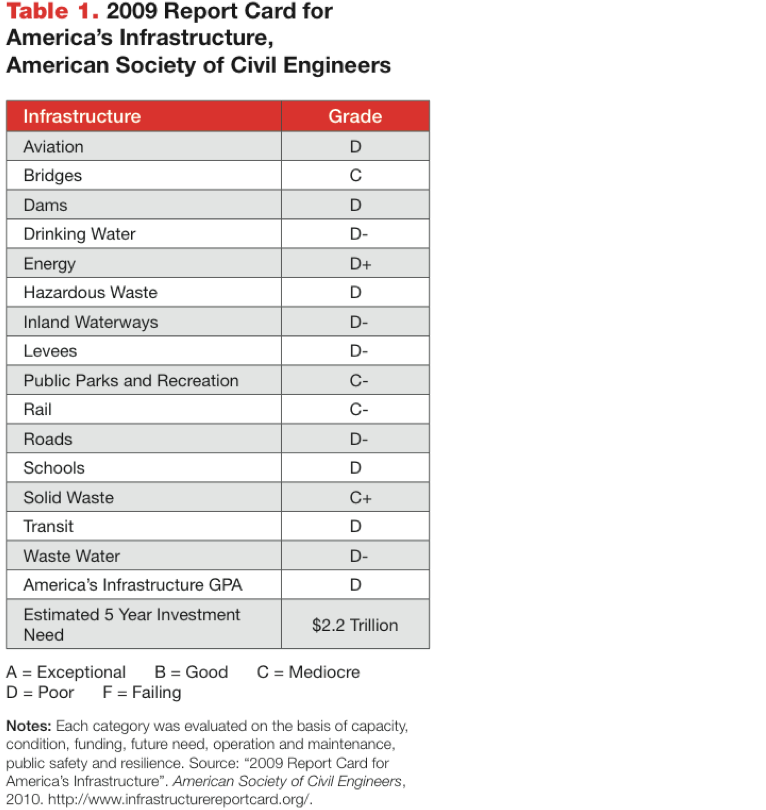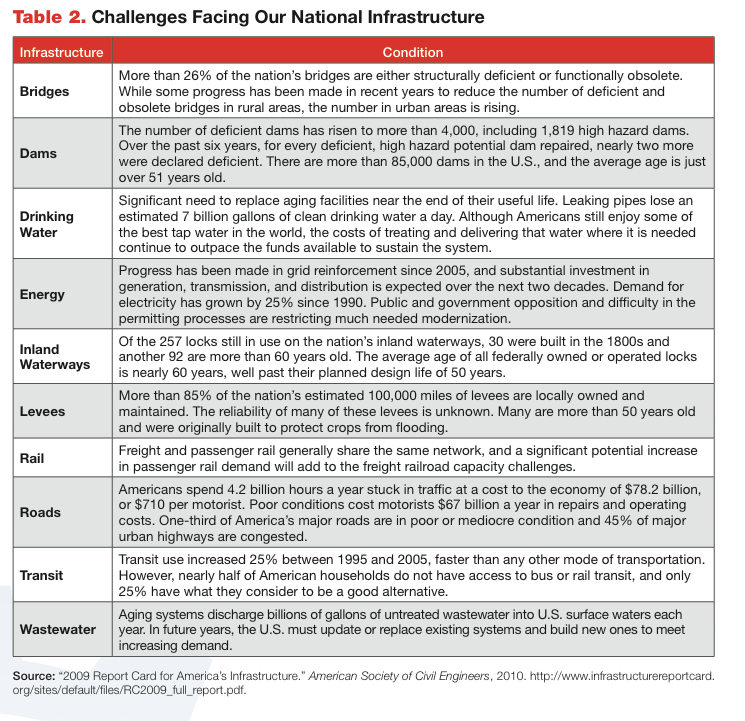ALLIANCE FOR AMERICAN MANUFACTURING
Executive Summary
The 21st century risk environment is creating an alarming trend in which the hyper-consequential, “500-year” event is occurring with greater frequency. Hurricanes, tornadoes, flooding, wildfires, earthquakes and tsunamis, as well as acts of terrorism and other man-made disasters, stand as constant reminders of the potential for significant and prolonged disruptions in our daily lives.
Despite more than 10 years of progress since the tragic events of September 11, 2001, and seven years of similar progress in the aftermath of Hurricane Katrina, America’s critical infrastructure—our electric grid, transportation systems, nuclear power plants, water infrastructure and treatment plants, and petroleum pipelines—as well as key population centers, remain inherently vulnerable.
While we cannot predict when weather-related, man-made, or other events will occur, as a nation we can certainly take steps to prepare for them in advance. Critical to this preparation is a robust, diverse, and resilient domestic manufacturing sector.
The deterioration and offshoring of America’s industrial base is becoming more apparent with each passing day, leaving new national security and preparedness concerns in its path. In short, we are becoming too reliant on global suppliers (many of whom may not have our best interests at heart in a time of crisis), along with a highly complex and vulnerable global supply chain needed to bolster our weak points or come to our rescue in the midst of an emergency.
To help understand this serious issue, the Alliance for American Manufacturing (AAM) asked two respected experts on homeland security and preparedness— Governor Tom Ridge and Robert B. Stephan—to examine the direct nexus between a strong domestic manufacturing sector and America’s ability to prevent, mitigate, recover from, and rebuild quickly in the wake of catastrophic events.
In their analysis, Governor Ridge and Colonel Stephan take an in-depth look at recent disasters, such as Hurricane Katrina and the Japan Earthquake and Fukishima Nuclear Reactor Disaster of 2011. They also provide a snapshot of several manufacturing sectors, including steel, water, and the electric grid, which are critical to disaster preparedness and recovery efforts. Their analysis brings into clear focus an unsettling vulnerability that must be addressed before it is too late.
Revitalizing America’s domestic manufacturing capacity must become a clear and urgent national priority at all levels of government and among industry leaders. The future vitality of our national and economic security goes hand-in-hand with that of our domestic manufacturing base.
The report makes a number of key recommendations designed to revitalize American manufacturing and ensure that we are not left flatfooted and vulnerable at a time when quick response and rapid rebuilding are necessary.
Among their specific recommendations are:
■ Develop a plan to make the restoration of a strong American manufacturing sector a key component of both national and economic security strategies.
■ Reinvest in America’s infrastructure, using U.S.-made materials.
■ Incentivize the revitalization of American manufacturing, including the use of domestic-content preferences that maximize the power of federal procurement funds.
■ Enforce trade laws to ensure a level playing field for U.S manufacturers and their workers facing unfair competition.
■ Invest in the American workforce to ensure we have the trained workers needed to rebuild our infrastructure and work in a larger, more modern manufacturing sector.
Read full report (PDF) here: Preparing For 21st Century Risks
About The Alliance for American Manufacturing
americanmanufacturing.org
“The Alliance for American Manufacturing is a non-profit, non-partisan partnership formed in 2007 by some of America’s leading manufacturers and the United Steelworkers to explore common solutions to challenging public policy topics such as job creation, infrastructure investment, international trade, and global competitiveness.”
Tags: AAM, Alliance for American Manufacturing, American Society of Civil Engineers, ASCE, Department of Homeland Security, DHS, Report Card








 RSS Feed
RSS Feed